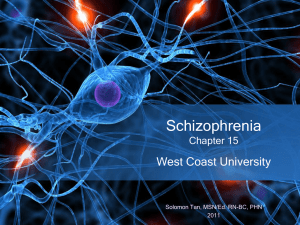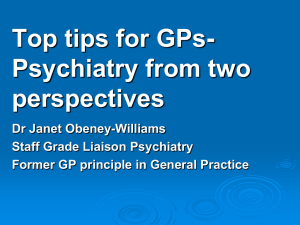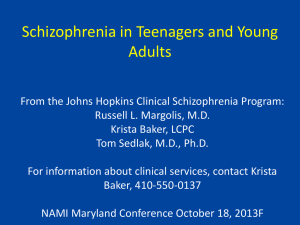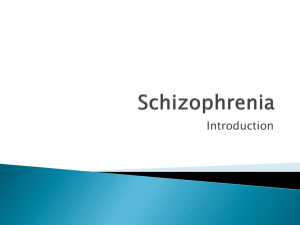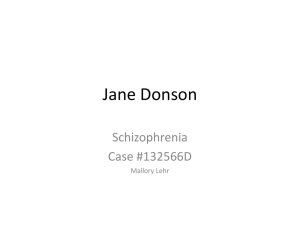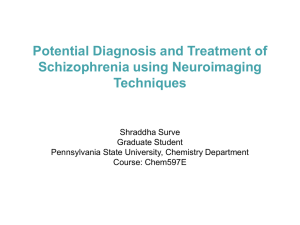Idaho Medicaid Drug Utilization Review Program
advertisement
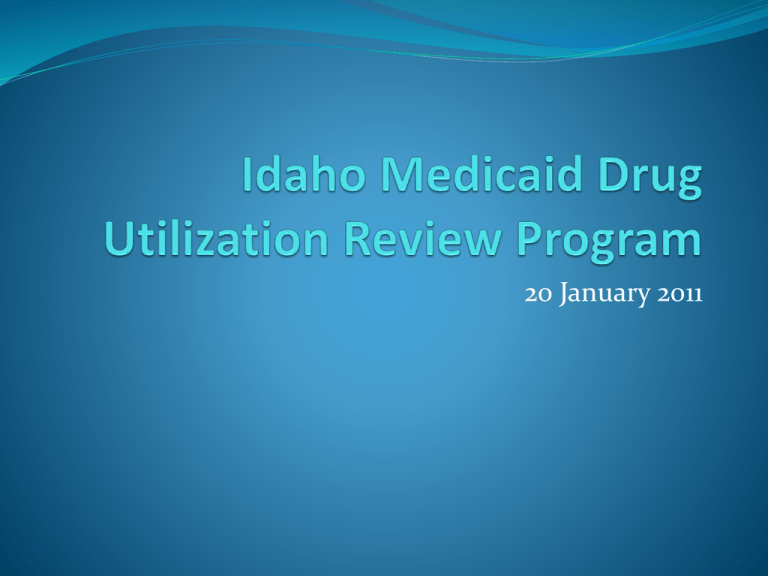
20 January 2011 Follow-up to Previous Reviews Type II Diabetes Treatment Guidelines Metformin Non-adherence Suboxone/Subutex Utilization Narcotics Long acting Short acting 2 Type II Diabetes Treatment Guidelines – Update Letters sent if patient was on a second generation hypoglycemic without metformin Results 243 letters were sent on 9/13-14/2010. 54 responses have been received as of 1/11/2011 (22.2% response rate). 3 Type II Diabetes Treatment Guidelines: Metformin Non-adherence - Update Patients were selected for evaluation if they had at least one refill of metformin that was at least 5 days late within the previous 3 month period that ended on 5/31/2010. Patients were also tagged for an intervention if their daily dose of metformin was < 500 mg/day for the 6 month evaluation period Results: Letters were sent to 73 prescribers for 69 patients on 9/15/2010 (10.9% lettering rate.) As of 1/1/2011, 20 responses have been received (27.4% response rate.) 4 Suboxone®/Subutex® Drug Utilization Review – Update Letters sent to prescribers of patients receiving Suboxone®/Subutex® and opioids or benzodiazepines within the same timeframe. Results: 567 letters sent for 124 patients on 9/15/2010 Letters were sent to ALL prescribers, not just those prescribing Suboxone®/Subutex®, to ensure all were aware the patient was on Suboxone®/Subutex® 83 responses have been received as of 1/11/2011 (14.6% response rate) 5 Suboxone®/Subutex® - Update – Pharmacy letters Letters were sent to pharmacies who had dispensed Suboxone®/Subutex® within the six month DUR evaluation period. Notification that therapeutic criteria would be implemented requiring a diagnosis of opioid dependency. Information on federal requirement that prescriber has a DEA-X number to prescribe Suboxone/Subutex for opioid dependency Concomitant opioid therapy is contra-indicated for patients receiving Suboxone/Subutex Results: 92 letters were sent on 9/20/2010. 10 responses have been received as of 1/1/2011 (10.8% response rate.) 6 Suboxone®/Subutex® Clinical Criteria As of 01-03-2011, therapeutic criteria is in effect for Suboxone®/Subutex®. Diagnosis of Opioid Dependency or Opioid Abuse is required If diagnosis is in electronic profile, claim will pay at pharmacy without written prior authorization as long as the following are met: Maximum Quantity Limit – 3 per day Age Requirement – 16 years or older Patients will not be authorized for payment of any other opioid while receiving Suboxone®/Subutex®. 7 Long Acting Narcotic Use: Update Patients using multiple long acting narcotics were identified Results: 28 letters were sent on 9/13/2010 on 17 patients. 17 responses have been received as of 10/19/2010 (60.7% response rate.) 8 Short Acting Narcotic Use - Update Patients using multiple short acting narcotics and those receiving chronic pain treatment with no long-acting narcotics were identified Results: 587 letters were sent on 9/13/2010 on 87 patients. 112 responses have been received as of 1/11/2011 (19.1% response rate.) 9 Current Intervention/Outcome Studies Long Acting Beta Agonist Inhalers Lack of Prior Controller Use Duration of Therapy Long Acting Beta Agonist Inhalers with high rescue inhaler use Fentanyl patch frequency interval < 72 hours 10 FDA Warning: LABAs Increased risk of severe exacerbation of asthma, leading to hospitalizations and, in some cases, death To ensure safe use: Contraindicated without use of controller Should not be used in patients controlled on low or medium dose ICS Long term use only in patients with asthma uncontrolled by controller Use for shortest duration required to achieve control, then discontinue and maintain controller Pediatric and adolescent patients who require LABA should use ICS/LABA combination product to ensure compliance (recommended for all patients) 11 Long Acting Beta Agonists Inhalers Patients were selected for evaluation if they had at least one fill of a LABA during the 3 month period that ended on 9/30/2010. History was evaluated for long term, continuous use of a LABA and lack of a controller medication, if applicable. 150 patient profiles were evaluated. Letters were sent to 32 prescribers about 30 patients on 12/16/2010 (21.3% lettering rate.) As of 1/1/2011, 5 responses have been received (15.6% response rate.) See packet for copy of the letter. 12 Long Acting Beta Agonist Inhalers Criteria Paragraph During a recent review, it was noted that your patient, Member Name, is taking a Long Acting Beta Agonist (LABA) and has 3 or less fills over the 6 month review period noting little or no use of an inhaled corticosteroid (ICS). FDA warnings for long acting beta agonists (LABA's) including combinations with corticosteroids (LABA/ICS) note that prolonged use of these agents has been associated with the increased risk of severe exacerbation of asthma, leading to hospitalizations and, in some cases, deaths. To ensure the safe use of these products their use is contraindicated without the use of an asthma controller agent, should not be used in patients controlled on low or medium dose inhaled corticosteroids (ICS), and should be used long term only in patients with asthma uncontrolled by a controller agent. Controller agents are medications taken daily on a long-term basis to keep asthma under clinical control and include inhaled and systemic glucocorticosteroids, leukotriene modifiers, inhaled long-acting inhaled B2 agonists with inhaled glucocorticosteroids, sustained release theophylline, cromones (e.g. sodium cromoglycate and nedocromil sodium) and anti-IgE (e.g. omalizumab). 13 LABA Long Term Use: Response detail as of 1/1/2011: Note that providers may choose more than one selection per response. Reviewed and do not believe adjustment is needed Reviewed and have or will modify the treatment Information clinically useful: plan to monitor I will use this information in the care of future pts My patient, but I did not prescribe this Somewhat useful to my practice Not useful to my practice Information appears to be correct 2 1 1 1 1 2 1 1 14 LABA Long Term Use: Comments of Interest* Profile ID: 10090000044: Patient appears to be noncompliant. She is also managed by a pulmonologist. Profile ID: 10090000245: I have never prescribed a LABA alone for this patient. In the records the medical history you provided I see no LABA prescription so I am not sure why you have this recorded this way. * Profiles are in member packets for your review 15 Overuse of Short Acting Beta Agonist Inhaler Patients were selected for evaluation if they had at least one fill of a LABA during the 6 month period and at least 2 fills for a SABA in the period that ended on 10/30/2010. 208 patient profiles were evaluated. Letters were sent to 399 prescribers about 102 patients on 12/28/2010 (192% lettering rate.) As of 1/1/2011, 63 responses have been received (16% response rate.) See packet for copy of the letter. 16 Overuse of Short Acting Beta Agonist Inhaler Criteria Paragraph During a recent review, it was noted that your patient, Member Name, is taking a long acting beta agonist (LABA) and also has 5 or more fills for a short acting beta agonist (SABA) over the 6 month review periods. While SABAs are the drug of choice for treating acute asthma symptoms and exacerbations, use of SABAs for more than 2 days a week generally indicates inadequate control of asthma and the need for initiating or intensifying anti-inflammatory therapy. Regularly scheduled, daily or chronic use of SABAs is not recommended.1 Use of more than one SABA canister every 1-2 months is associated with an increased risk of an acute exacerbation that requires an emergency department visit or hospitalization.2 1 National Heart, Lung and Blood Institute, Expert Panel report 3 (EPR3): Guidelines for the Diagnosis and Management of Asthma. 2007. 2 Crystal-Peters J, Neslusan C, Crown WH, Torres A. Treating allergic rhinitis in patients with comorbid asthma: the risk of asthma-related hospitalizations and emergency department visits. J Allergy Clin Immunol 2002;109(1):57-62. 17 SABA overuse in LABA patients: Response detail as of 1/1/2011: Note that providers may choose more than one selection per response. Reviewed and do not believe adjustment is needed 14 Reviewed and have or will modify the treatment 9 Attempted to modify therapy unsuccessfully 5 Information clinically useful: plan to monitor 13 I will use this information in the care of future pts 6 Previously saw this pt, but no longer in my care 6 My patient, but I did not prescribe this 15 Not my patient, never under my care 6 Under my care, but have not seen recently 6 Extremely useful to my practice 2 Very useful to my practice 10 Somewhat useful to my practice 5 Not useful to my practice 1 Information appears to be correct 2 Will change dose 1 18 SABA Overuse: Comments of Interest* Profile ID: 10100000077: X does not have the insight I would desire for a patient regarding their disease despite being a bright kid. He can’t qualify in detail his usage of his inhalers. He lives in an environment that has allergens which could increase his asthma. Xolair will be offered in the future as a possible option to get off steroids. Profile ID: 10090000185: Monitor use of both LABA and SABA carefully, provide better family instructions. Poor patient compliance with LABA leads to exacerbation and need for SABA. Parental confusion also leads to misuse of SABA. * Profiles are in member patients for your review 19 Fentanyl Topical Patch (Duragesic®) Frequency of Administration Patients were selected for evaluation if they received more than 10 patches in a 30 day period during the 3 month period that ended on 11/30/2010. 291 patient profiles were evaluated. Letters were sent to 60 prescribers about 44 patients on 12/28/2010 (21% lettering rate.) As of 1/1/2011, 16 responses have been received (27% response rate.) See packet for copy of the letter. 20 Fentanyl Topical Patch Frequency of Administration Criteria Paragraph During a retrospective drug utilization review, it was noted that 31% of Idaho Medicaid patients who were prescribed fentanyl patches were replacing them every 48 hours instead of 72 hours. According to the FDA approved labeling information, an increase in the mcg/hr dose should be evaluated before shortening the dosing interval from 72 hours to 48 hours. The package insert for fentanyl patches also states that the majority of patients should maintain pain relief with replacing the patch every 72 hours. On a monthly basis, utilizing 15 patches (one patch every 48 hours) rather than 10 patches (one patch every 72 hours) is a 50% increase in drug cost. During a recent review, it was noted that your patient, Member Name, was receiving patches in quantities greater than 10 patches per 30 days. Please review the attached profile for Member Name and evaluate if this Idaho Medicaid participant would be a candidate to switch to an every 72 hour regimen. 21 Fentanyl Patch Frequency of Administration: Response detail as of 1/1/2011: Note that providers may choose more than one selection per response. Reviewed and do not believe adjustment is needed Reviewed and have or will modify the treatment Attempted to modify therapy unsuccessfully Information clinically useful: plan to monitor Previously saw this pt, but no longer in my care Very useful to my practice Somewhat useful to my practice 12 2 2 1 2 1 2 22 Fentanyl Patch Frequency of Administration: Comments of Interest* Profile ID: 10110000208: Will refer to pain management specialist. * Profile is in member patients for your review 23 Proposed Studies for Next Quarter: Auto Refill Practices Atypical Antipsychotics Colchicine Usage High Dose Utilization Oxycodone Atypical Antipsychotics Injectable Antipsychotics Proton Pump Inhibitors – Long Term Use Thiazolidinedione Safety Tramadol with SSRI’s or SNRI’s All information based on Idaho Medicaid Pharmacy Data 4th Quarter 2010 (10/1/10-12/31/10) unless otherwise indicated. 24 Auto Refill Practices Some pharmacies are instituting Auto Refill policies which allow them to automatically dispense refills based on days since last fill Issues Potential for stockpiling Potential for continued fill of discontinued medications Increase cost/waste 25 Atypical Antipsychotics P&T Recommendations Approved for diagnosis per FDA indications or off-label indications with supporting evidence-based literature. All patients receiving at least 90 days of therapy for the past 120 days as of implementation date will be grandfathered. No criteria for diagnosis required. No PDL requirements for patients with schizophrenia and related psychosis. Bipolar, major depression adjunctive, autism and other designated acceptable diagnoses will require failure of a preferred agent for designated non-preferred agents. Age, dose and quantity per labeling information on all drugs. If the medical diagnosis and required drug history have been submitted as prior claims then the prescription will auto-approve at point of sale. i.e. No written PA required. 26 Atypical Antipsychotics P&T Recommendations Agent Diagnoses/Criteria Abilify® Schizophrenia and Related Psychoses; Bipolar Disease; Autism; Adjunctive Therapy in Major Depression with continuous antidepressant therapy within the last eight weeks with trials of a minimum of two different antidepressants with a minimum trial of two weeks each. Abilify® Injectable Schizophrenia and Related Psychoses with Acute Agitation; Bipolar Disease with Acute Agitation Clozapine Resistant Schizophrenia and Related Psychoses Fanapt® Schizophrenia and Related Psychoses Geodon® Schizophrenia and Related Psychoses; Bipolar Disease – Mania and Mixed State Geodon® Injectable Schizophrenia and Related Psychoses with Acute Agitation 27 Atypical Antipsychotics P&T Recommendations (continued) Agent Invega® Adherence Diagnoses/Criteria RatesSchizophrenia and Related Psychoses Invega Sustenna® Schizophrenia and Related Psychoses AND History of Oral Invega® or Risperidone within the past 2 years AND Failure of Risperdal Consta® Risperidone Schizophrenia and Related Psychoses; Bipolar Disease – Mania and Mixed State; Autism; Disruptive Behavioral Disorders; Obsessive Compulsive Disorder *Brand name will deny for brand/generic rule Risperdal Consta® Schizophrenia and Related Psychoses Saphris® Schizophrenia and Related Psychoses; Bipolar Disease – Mania and Mixed State 28 Atypical Antipsychotics P&T Recommendations (continued) Agent Seroquel® Adherence Diagnoses/Criteria RatesSchizophrenia and Related Psychoses ; Bipolar Disease – Mania and Mixed State; Bipolar Depression; Obsessive Compulsive Disorder Seroquel XR® Schizophrenia and Related Psychoses ; Bipolar Disease – Mania and Mixed State; Bipolar Depression; Adjunctive Major DepressionContinuous - antidepressant therapy within the last eight weeks with trials of a minimum of two different antidepressants with a minimum trial of two weeks each. Symbyax® Treatment Resistant Depression - Continuous antidepressant therapy within the last eight weeks with trials of a minimum of two different antidepressants with a minimum trial of two weeks each. 29 Atypical Antipsychotics P&T Recommendations (continued) Agent Zyprexa® Adherence Diagnoses/Criteria RatesSchizophrenia and Related Psychoses, Acute Agitation; Bipolar, Acute Agitation Zyprexa Injection® Schizophrenia and Related Psychoses; Bipolar Disease, Acute Agitation Zyprexa Relprevv® Reimbursed as Medical Benefit Only; Schizophrenia and Related Psychoses 30 Atypical Antipsychotics P&T Recommendations Patients Receiving Atypical Antipsychotics 41% 59% With Approvable Diagnosis Without Approvable Diagnosis 31 Gout Treatment Colchicine’s Place in Therapy Acute Gout Attacks – NSAIDS and/or corticosteroids are the drugs of choice for the management of an acute gout attack. Management of Chronic Gout – Allopurinol is the drug of choice to lower serum uric acid and does not require prior authorization. Uloric® will be approved for payment only after (1) continuation of gout attacks after three months of allopurinol therapy at a therapeutic dose, (2) serum urate levels > 6mg/dl after three months of allopurinol therapy at a therapeutic dose, or (3) documented intolerance to allopurinol. To prevent an acute attack as a result of starting allopurinol, low dose NSAID (e.g. naproxen 250mg twice daily) or prophylactic Colcrys® can be used if there are no contra-indications. Probenecid increases uric acid excretion and does not require prior authorization. 32 Gout Treatment Colchicine’s Place in Therapy Utilization Overview Number of Recipients Number of Claims Average Cost/Claim Allopurinol 170 407 $6.59 Colchicine 46 63 $24.31 Colcrys® 10 12 $299.43 Probenecid 4 8 $27.28 Uloric® 8 20 $156.77 33 High Dose Oxycodone Long Acting Nine recipients received more than one strength of LA Oxycodone during Oct, Nov, and Dec 2010. 3 3 40mg + 10mg 60mg + 15mg 80mg + 30mg 2 1 80mg + 40mg 34 High Dose Atypical Antipsychotics 395 recipients received multiple doses of the same atypical antipsychotic during Oct, Nov, and Dec 2010 Product Distribution by Number of Recipients Multiple Doses of Same Agent 1 1 1 15 FANAPT SAPHRIS 23 SYMBYAX 72 197 INVEGA 57 CLOZAPINE ZYPREXA 98 67 GEODON ABILIFY RISPERIDONE SEROQUEL 35 Injectable Atypical Antipsychotics Invega® Sustenna® and Risperdal® Consta® Indications Agent Indication Invega® Sustenna® Acute and Maintenance Treatment of Schizophrenia Risperdal® Consta® Treatment of Schizophrenia Risperdal® Consta® Mono or Adjunct therapy to Lithium or Valproate in Bipolar I Disorder Utilization Overview Agent Recipients Invega® Sustenna® 93 Risperdal® Consta® 149 Oral Agents 6719 Patients Receiving Both Oral and Injectable – 4th Quarter 2010 140 *Idaho Medicaid Data 4th Quarter 2010 (10/1/2010-12/31/2010) 36 Injectable Atypical Antipsychotics Invega® Sustenna® and Risperdal® Consta® Goal 1: Evaluate Adherence Rates Goal 2: Oral use prior Current adherence For Invega Sustenna – previous adherence on Risperdal Consta Ensure not receiving oral therapy in addition to injectable Program Integrity Ensure doses dispensed by the pharmacy are actually administered Compare drug profiles, medication administration records and time period 37 Injectable Atypical Antipsychotics Study Responsibilities MMA: Program Integrity: Request and obtain the medication administration records and the progress notes Take action on any identified fraud or billing irregularities Medicaid Pharmacy Staff Patient list Pharmacy and Prescriber identification Compile and analyze treatment for each patient Present an analysis of the data to DUR Board and P&T Committee DUR Board and P&T Committee Review and interpret results Make Conclusions and Recommendations 38 Injectable Atypical Antipsychotics Invega® Sustenna® and Risperdal® Consta® Adherence Rates Agent Adherence Rate Oral Therapy 66% Risperdal® Consta® 71% Invega® Sustenna® 76% Adherence calculated by evaluating claims for patients receiving multiple claims for the same agent and comparing difference between days’ supply and days between refills. *Idaho Medicaid Data 3rd Quarter 2010 (7/1/2010-9/30/2010) 39 Proton Pump Inhibitors Long Term Use High doses or long-term use of PPI’s may increase the risk for hip, wrist, and spine fractures. Utilization Data – Patients receiving 4 or more claims for a PPI between 7/1/2010 and 12/31/2010 were identified. Number of Recipients Number of Claims 3819 21,285 40 Proton Pump Inhibitors Long Term Use Product Distribution ACIPHEX 20 114 178 DEXILANT 1196 LANSOPRAZOLE 28 1037 2670 NEXIUM OMEPRAZOLE/ PRILOSEC PANTOPRAZOLE/ PROTONIX PREVACID Idaho Medicaid claims data 7/1/10 – 12/31/10 41 Thiazolidinediones (TZDs) Safety issues with Avandia® related to increased risk for Cardiovascular Events “The U.S. Food and Drug Administration announced that it will significantly restrict the use of the diabetes drug Avandia® (rosiglitazone) to patients with Type 2 diabetes who cannot control their diabetes on other medications. These new restrictions are in response to data that suggest an elevated risk of cardiovascular events, such as heart attack and stroke, in patients treated with Avandia®.” http://www.fda.gov/Drugs/DrugSafety/PostmarketDrugSafetyInformationforPatientsandProviders/ucm226956.htm 42 Thiazolidinediones Product Distribution 4th Qtr 2010 Product Distribution 4th Qtr 2009 1 69 44 109 340 356 ActoPlus Met Actos Avandia ActoPlus Met XR 40 ActoPlus Met Actos Avandia 43 Tramadol with SSRI’s or SNRI’s Increased risk for serotonin syndrome 150 profiles selected on 1/12/2011 Profiles will be reviewed by DHW Pharmacy staff Focus is on patients with more than one tramadol fill and at least a 30 day overlap with the SSRI or SNRI Letter will include educational information about serotonin syndrome 44 Antiemetics Ondansetron Expenditure $700,000 $600,000 $500,000 $400,000 $300,000 $200,000 $100,000 $- 2001 2002 2003 2004 2005 2006 2007 2008 2009 2010 Generic Preferred Over Brand PA Removed < 15 Generic Ondansetron Available PA Criteria Start 45 Antiemetics Ondansetron Utilization (Claims) 4,500 4,000 3,500 3,000 2,500 2,000 1,500 1,000 500 0 2001 2002 2003 2004 2005 2006 2007 2008 2009 2010 Generic Preferred Over Brand PA Removed < 15 Generic Ondansetron Available PA Criteria Start 46 Ondansetron Metrics Comparison with Other States State Estimated Rx Users Average Monthly Ondan Utilizers Average Monthly Ondan Claims Cost/ Ondan Claim Ondan Users as % of Rx Users Qty Limit PDL Status Clinical Requirements ID 53,000 868 1,085 $19.92 2% 30 tabs/30 days Preferred Clinical PA State A 23,000 702 889 $77.31 3% 4-12 tabs/month Preferred Clinical PA State B 430,000 19,630 22,619 $11.57 5% Various QL (daily, monthly annual) Preferred No Clinical PA State C 250,000 9,342 10,870 $26.27 4% 4-12 tabs/month Preferred No Clinical PA State D 440,000 13,405 16,401 $19.56 3% No restrictions Claims data 4th Quarter 2010 - 10/1/2010 through 12/31/2010 47 Ondansetron Metrics Comparison with Other States State Estimated Rx Users Average Monthly Ondan Utilizers Average Monthly Ondan Claims Cost/ Ondan Claim Ondan Users as % of Rx Users Qty Limit PDL Status Clinical Requirements State E 88,000 2,471 3,861 $15.14 3% 15 tabs/Rx Preferred No Clinical PA State F 40,000 974 1,355 $20.63 2% 10-12 tabs/30 days Preferred No Clinical PA State G 130,000 3,081 3,617 $23.90 2% 10-15 tabs/month Preferred No Clinical PA State H 105,000 5,569 7,800 $27.28 5% 1-15 tabs/Rx Class not on PDL No Clinical PA State I 165,000 12,766 27,859 $33.85 8% 15 tabs/Rx Preferred No Clinical PA Claims data 4th Quarter 2010 - 10/1/2010 through 12/31/2010 48 Prospective DUR Report History Errors: • DD – drug-to-drug • PG – drug to pregnancy • TD – therapeutic duplication • ER – early refill • MC – drug-to-disease Non-History Errors: • PA – drug-to-age • HD – high dose • LD – low dose • SX – drug-to-gender 49 Produr Message Report: August 2010 (for comparison) ProDUR Message ProDUR Severity Message Count Message Amount Drug To Drug 1 1,271 $238,433.54 2 11,665 $1,687,424.27 3 54,300 $7,621,436.89 9 1 $23.47 1 106 $12,434.03 2 51 $878.68 1 75,152 $10,182,746.49 2 269,091 $37,046,563.18 3 237,373 $35,434,743.96 1 84 $2,124.04 2 61 $1,964.14 A 52 $1,006.90 B 93 $16,684.46 C 185 $15,739.00 D 22 $894.16 X 18 $440.76 Duplicate Therapy 0 103,647 $18,776,825.12 Min Max 0 36,171 $4,812,065.33 Too Soon Clinical 0 20,306 $3,231,378.40 809,649 $119,083,806.82 Drug To Gender Drug To Known Disease Drug To Pregnancy ALL 50 Produr Message Report: December 2010 ProDUR Message ProDUR Severity Message Count Message Amount Drug To Drug 1 1,173 $146,999.56 2 12,182 $1,700,261.43 3 51,685 $7,325,789.80 9 1 $23.47 1 96 $10,359.56 2 51 $2,176.82 1 64,326 $7,320,792.62 2 233,655 $32,056,536.99 3 211,605 $31,687,569.10 1 108 $2,681.28 2 73 $1,643.76 A 85 $1,236.49 B 105 $14,363.74 C 215 $27,401.45 D 13 $354.95 X 50 $3,617.89 Duplicate Therapy 0 108,695 $18,457,983.74 Min Max 0 37,916 $5,383,620.08 Too Soon Clinical 0 21,418 $3,482,239.41 743,472 $107,625,652.14 Drug To Gender Drug To Known Disease Drug To Pregnancy ALL 51 Top Drugs for Selected Produr Type: Duplicate-Therapy Hydrocodone/APAP with other Hydrocodone/APAP – 2,888 alerts (15.18% of claims for Hydrocodone/APAP) Methylphenidate with other methylphenidate – 2,143 alerts (35.58% of claims for methylphenidate) Quetiapine with other quetiapine – 2,052 alerts (55.13% of claims for quetiapine) Venlafaxine with other venlafaxine – 1,798 alerts (72.65% of claims for venlafaxine) Oxycodone/APAP with hydrocodone/APAP – 1,388 alerts (51.69% of claims for oxycodone/APAP) Bupropion with bupropion – 1,281 alerts (42% of claims for bupropion) Hydrocodone/APAP with tramadol – 1,201 alerts (6.31% of claims for bupropion) 52


